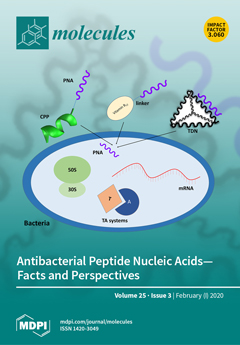Root-knot nematode diseases cause severe yield and economic losses each year in global agricultural production.
Virgibacillus dokdonensis MCCC 1A00493, a deep-sea bacterium, shows a significant nematicidal activity against
Meloidogyne incognita in vitro. However, information about the active substances of
V. dokdonensis MCCC 1A00493
[...] Read more.
Root-knot nematode diseases cause severe yield and economic losses each year in global agricultural production.
Virgibacillus dokdonensis MCCC 1A00493, a deep-sea bacterium, shows a significant nematicidal activity against
Meloidogyne incognita in vitro. However, information about the active substances of
V. dokdonensis MCCC 1A00493 is limited. In this study, volatile organic compounds (VOCs) from
V. dokdonensis MCCC 1A00493 were isolated and analyzed through solid-phase microextraction and gas chromatography–mass spectrometry. Four VOCs, namely, acetaldehyde, dimethyl disulfide, ethylbenzene, and 2-butanone, were identified, and their nematicidal activities were evaluated. The four VOCs had a variety of active modes on
M. incognita juveniles. Acetaldehyde had direct contact killing, fumigation, and attraction activities; dimethyl disulfide had direct contact killing and attraction activities; ethylbenzene had an attraction activity; and 2-butanone had a repellent activity. Only acetaldehyde had a fumigant activity to inhibit egg hatching. Combining this fumigant activity against eggs and juveniles could be an effective strategy to control the different developmental stages of
M. incognita. The combination of direct contact and attraction activities could also establish trapping and killing strategies against root-knot nematodes. Considering all nematicidal modes or strategies, we could use
V. dokdonensis MCCC 1A00493 to set up an integrated strategy to control root-knot nematodes.
Full article


